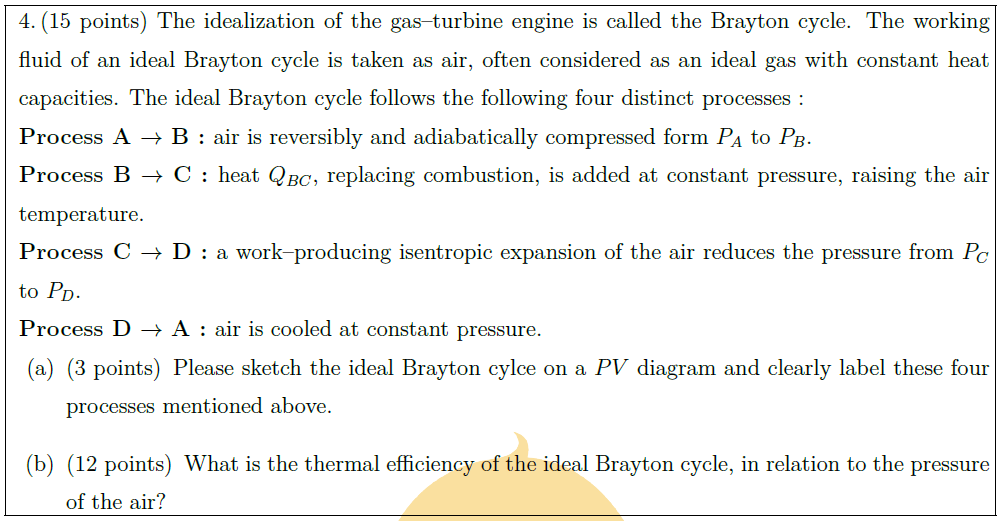Solution:
The idealization of the gas–turbine engine is called the Brayton cycle. The working fluid of an ideal Brayton cycle is taken as air, often considered as an ideal gas with constant heat capacities. The ideal Brayton cycle follows the following four distinct processes :\\
{\bf Process A $\to$ B : }air is reversibly and adiabatically compressed form $P_A$ to $P_B$.\\
{\bf Process B $\to$ C : }heat $Q_{BC}$, replacing combustion, is added at constant pressure, raising the air temperature.\\
{\bf Process C $\to$ D : }a work–producing isentropic expansion of the air reduces the pressure from $P_C$ to $P_D$.\\
{\bf Process D $\to$ A : }air is cooled at constant pressure.
\begin{parts}
\part [3] Please sketch the ideal Brayton cylce on a $PV$ diagram and clearly label these four processes mentioned above.
\part [12] What is the thermal efficiency of the ideal Brayton cycle, in relation to the pressure of the air?
\end{parts}





